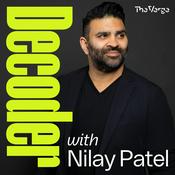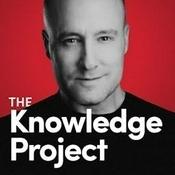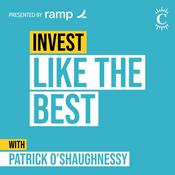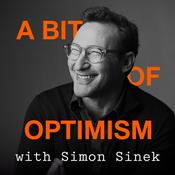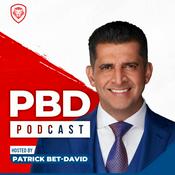Available Episodes
5 of 218
- Sequence Smarter - Stop Winging It - Audit Your Yoga Sequence in 7 QuestionsIf you’ve ever felt like you’re “winging it” when planning your yoga classes, this episode will help you fix that for good. I break down my Sequence Smarter Framework and walk you through seven simple questions that will instantly make your sequences clearer, more intentional, and easier to teach. Whether you’re new to sequencing or ready to level up your teaching, this guide will change the way you plan your classes.Episode Highlights:Why many yoga teachers struggle with sequencing and end up “winging it.”The purpose of the Sequence Smarter Framework and why it matters.How the three pillars—Purpose, Pathway, and Pose—create intelligent sequencing.What it really means to define the purpose of a class with clarity.How to build a pathway that prepares the body, breath, and pranic flow.Why pose selection should be the last step, not the first.The most common reasons yoga sequences feel disjointed or ineffective.How to use the seven audit questions to evaluate any sequence.A breakdown of applying the 3P framework to Trikonasana.Why thoughtful sequencing supports mixed-level rooms and aging bodies.How intelligent sequencing builds confidence, clarity, and longevity in teaching.Waitlist for the Online 300-Hour Yoga Teacher Training (launching January)Sequence Smarter – The Living Body of AsanaFor teachers living in India, reach out to Janessa at [email protected] for special local pricingJoin our mailing listFind all the resources mentioned in this episodeConnect with us on Instagram--------27:38
- Teach Smarter Series — How To Go Beyond Repetitive Physical Cues: A Guide for Yoga TeachersIf you’ve ever felt stuck repeating the same physical cues in your classes, this episode is going to open up a whole new way of thinking about teaching. I’m breaking down what it really means to move from gross to subtle, how subtle cueing works, and why it’s the key to creating deeper, more meaningful yoga experiences. You’ll walk away with practical tools you can use right away—no fluff, no woo, just clearer teaching.Episode Highlights:Explanation of the Teach Smarter module and how this episode builds on the “Gross to Subtle” workshop.Why two teachers can teach the same pose but create completely different student experiences.The difference between the gross (sthula) body and the subtle (sukshma) body.Why most modern yoga teaching gets stuck in the gross physical layer.The limitations of staying in purely physical cueing—repetition, boredom, overthinking alignment, teacher burnout, and lack of depth.Clear signs that a teacher may be relying too heavily on gross cueing.Introduction to subtle cueing as a precise and grounded practice—not vague or woo-woo.Overview of the six types of subtle cueing:Attention cuesBreath cuesPranic-direction cuesSensory cuesInteroceptive cuesEnergetic sequencingA practical example of Warrior II comparing gross cues vs. subtle cues.Guidance on how teachers can begin practicing subtle cueing:Use intentional pausesLet the breath lead the teachingChoose one subtle layer per classStop micromanaging alignmentPractice receiving your own cuesTrust your students’ intelligenceWhy subtle cueing matters for long-term student development and sustainable practice, especially as students age.A self-inquiry checklist for teachers to evaluate their cueing approach.Reflective questions for both teachers and students to deepen their awareness in asana.Encouragement to revisit the episode, reflect, and apply the concepts.Invitation to explore the 300-hour YTT and how the training weaves ancient wisdom with modern teaching needs.Brief overview of the three modules:Sequence SmarterBreathe SmarterTeach SmarterWaitlist for the Online 300-Hour Yoga Teacher Training (launching January)Sequence Smarter – The Living Body of AsanaFor teachers living in India, reach out to Janessa at [email protected] for special local pricingJoin our mailing listFind all the resources mentioned in this episodeConnect with us on Instagram--------30:04
- The 300-Hour YTT You’ve Been Waiting For — All the Details InsideAfter years of saying no, I’m finally bringing back my 300-hour yoga teacher training — and I can’t wait to tell you why! In this episode, I share how this new online program came to life, what makes it different, and how it’s designed to help you teach, sequence, and breathe smarter. If you’ve been craving more depth, clarity, and confidence in your yoga journey, this one’s for you.Episode Highlights:Why I decided to finally relaunch my 300-hour training after years of saying noThe gaps I’ve seen in most 200-hour trainings, and how this course bridges themMy vision for reimagining yoga education: depth without overwhelm, authenticity without dogmaHow this online format differs from traditional in-person teacher trainingsThe three main modules:Sequence Smarter – The Living Body of AsanaBreathe Smarter – The Living Body of PranaTeach Smarter – The Living Body of TeachingA deep dive into Module 1, including:The evolution and origins of asanaYoga for the elderly and creating accessible practiceBreathing in asana: the missing link in most yoga trainingsThe Sequence Smarter Framework for confident, intelligent sequencingCourse structure: year-long online program with recorded and live sessionsAccess details: when it begins, early-bird pricing, and options to register module-by-moduleHow this training integrates manuals, reflection workbooks, and done-for-you sequencesA preview of what’s to come in Module 2: Breathe Smarter and Module 3: Teach SmarterWaitlist for the Online 300-Hour Yoga Teacher Training (launching January)Sequence Smarter – The Living Body of AsanaFor teachers living in India, reach out to Janessa at [email protected] for special local pricingJoin our mailing listFind all the resources mentioned in this episodeConnect with us on Instagram--------28:48
- From Sole to Soul – The Power of Your Feet in Yoga & Life with Michelle EdmisonOur feet are our foundation, but most of us don’t give them much thought until something goes wrong. In this episode, I chat with physical therapist and movement educator Michelle Edmison about how reconnecting with your feet can transform not just your yoga practice, but your whole life. We explore foot anatomy, posture, brain-body connection, and why strong, mobile feet are key to balance and longevity.Michelle also shares practical tips you can start right away to restore strength, sensitivity, and awareness in your feet. Whether you’re a yoga teacher, mover, or simply curious about how to support your foundation, this conversation will have you looking at your feet in a whole new way.Episode Highlights:Why the feet are considered the true foundation of the bodyHow modern footwear has weakened natural foot functionCommon ways our feet change as we age, and why it’s not just about agingThe powerful brain-foot connection and how movement shapes neuroplasticityThe nervous system’s relationship with the feet and sensory inputEmotional sensitivity, trauma, and how they can manifest in the feetThe real purpose of the toes: stability and propulsion, not grippingWhat dancers, athletes, and yogis can teach us about foot functionUnderstanding bunions and common foot issues: what causes them, how alignment affects them, and how yoga can helpThe truth about arches, pronation, and flat feetHow women’s feet change during perimenopause and menopauseMichelle’s top three non-negotiable practices for foot healthWhy a “foot problem” is never just about the footWaitlist for the Online 300-Hour Yoga Teacher Training (launching January)Sequence Smarter – The Living Body of AsanaFor teachers living in India, reach out to Janessa at [email protected] for special local pricingJoin our mailing listFind all the resources mentioned in this episodeConnect with us on Instagram--------55:24
- Autoimmune Diseases & Yoga - The Science, the Practice, and the Hope with Renu JainAutoimmune diseases can feel isolating and unpredictable, but yoga offers both science and hope. I sit down with yoga therapist and researcher Renu Jain to explore how stress, the gut, and the immune system are connected; and how personalized yoga, pranayama, and mindfulness can support healing from the inside out.Episode Highlights:Introduction to guest Renu Jain and her background at Kaivalyadhama.Understanding what autoimmune diseases are and how they affect the body.Exploring common shared patterns and root causes behind autoimmune conditions.Exploring the connection between stress, the gut, and immune function.Understanding the pranic system and how energetic imbalance mirrors physical symptoms.The role of yoga in managing autoimmune conditions holistically.Importance of personalization in yoga therapy: why no one-size-fits-all approach works.Go-to questions yoga teachers should ask students before planning a practice.Pranayama practices that support balance and calm for autoimmune health.Restorative yoga, relaxation, and mindfulness as healing tools.How meditation helps regulate the nervous system and supports emotional healing.The mindset and empathy yoga teachers need when working with these students.Why yoga philosophy and ethics should always guide therapeutic teaching.Final reflections on patience, compassion, and using yoga as a bridge between science and spirit.Waitlist for the Online 300-Hour Yoga Teacher Training (launching January)Sequence Smarter – The Living Body of AsanaFor teachers living in India, reach out to Janessa at [email protected] for special local pricingJoin our mailing listFind all the resources mentioned in this episodeConnect with us on Instagram--------38:54
More Business podcasts
Trending Business podcasts
About Let's Talk Yoga
Welcome to the Let's Talk Yoga podcast—your ultimate online destination for everything yoga. Think of it as your virtual yoga school, offering something for everyone—whether you’re a seasoned yoga teacher, a dedicated student, or simply curious about the deeper layers of yoga.Join host Arundhati Baitmangalkar, an immigrant yoga teacher, studio owner, global mentor, and creator of some of the most sought-after yoga teacher training programs in the world. Each week, we bring you valuable insights, in-depth conversations with renowned yoga teachers, and an abundance of yoga resources designed to inspire, educate, and transform.From mastering the art of teaching to navigating the complexities of yoga philosophy and business, this niche podcast is your go-to resource for all things yoga. Ready to deepen your practice and expand your understanding? Hit subscribe now and never miss an episode of Let's Talk Yoga!
Podcast websiteListen to Let's Talk Yoga, Prof G Markets and many other podcasts from around the world with the radio.net app

Get the free radio.net app
- Stations and podcasts to bookmark
- Stream via Wi-Fi or Bluetooth
- Supports Carplay & Android Auto
- Many other app features
Get the free radio.net app
- Stations and podcasts to bookmark
- Stream via Wi-Fi or Bluetooth
- Supports Carplay & Android Auto
- Many other app features


Let's Talk Yoga
Scan code,
download the app,
start listening.
download the app,
start listening.

















